Sixty years ago today, during one of the tensest periods of the Cold War in Europe, a pair of West German jet fighter-bombers accidentally strayed into communist airspace in a simple error that could have had genuinely catastrophic results. After evading the dozens of MiGs sent to intercept them, the two Luftwaffe pilots safely landed in West Berlin. They would never fly on the front line again and efforts were made to cover up the embarrassing incident, one which might have even triggered World War III.
Only a month after the Berlin Wall had been built, separating communist East Berlin from West Berlin, tensions were running high in Europe, including in the air over a divided Germany. Triggered by the construction of that wall, which had begun on August 13, the Berlin Crisis of 1961 emerged amid a major hike in Soviet defense expenditure and a resumption in nuclear testing. It led to U.S. President John F. Kennedy’s decision to deploy significant U.S. military reinforcements to Europe, including Air National Guard units, mostly flying F-84F Thunderstreak fighter-bombers, as well as around 100,000 ANG and Air Force Reserve personnel.
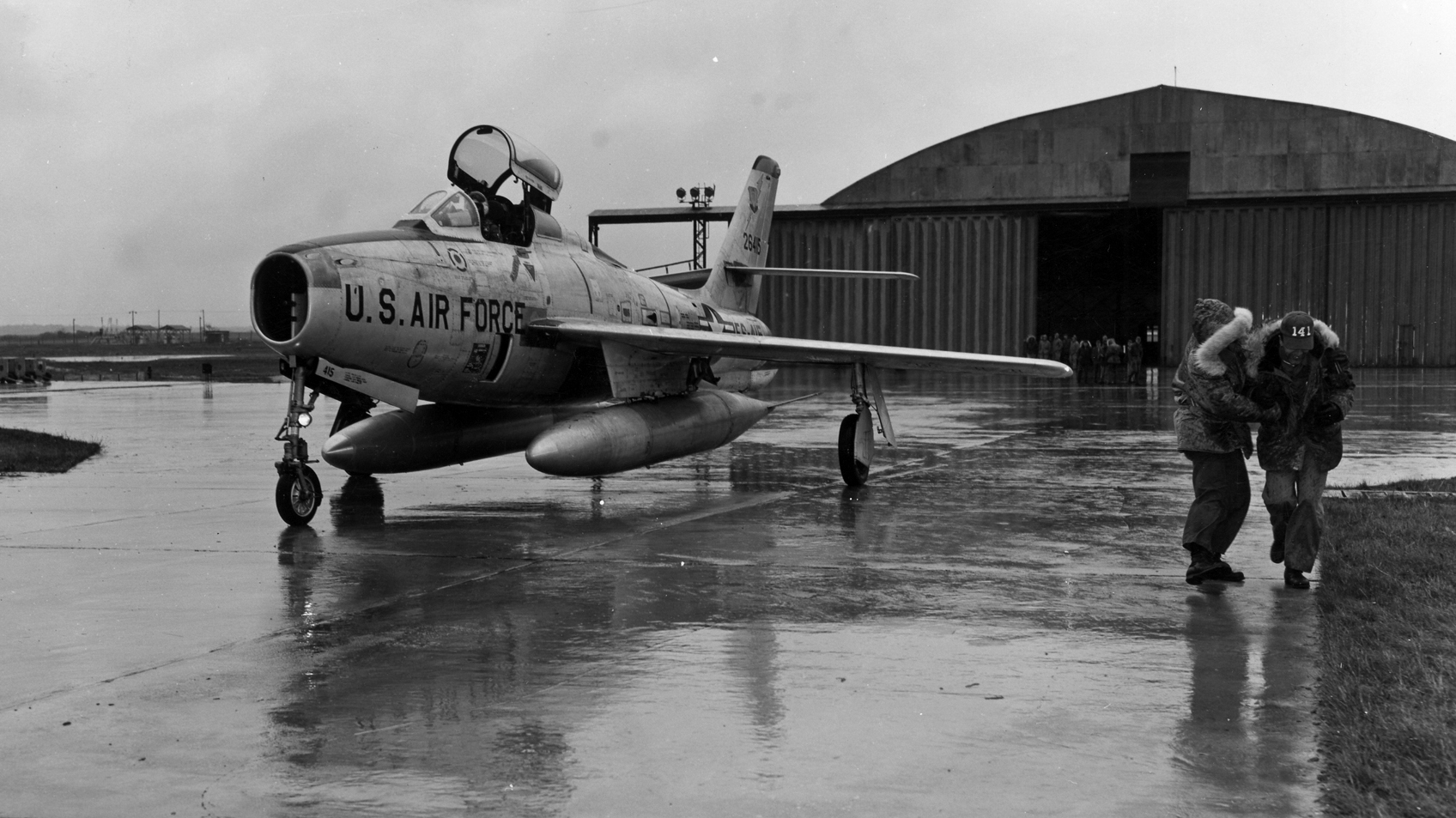
It was against this backdrop that, on September 14, two other F-84Fs operated by the West German Luftwaffe’s Jagdbombergeschwader 32, or 32nd Fighter-Bomber Wing, took off from their airbase at Lechfeld in Bavaria, in southern Germany. The pilots, 23-year-old Feldwebel Peter Pfefferkorn and 27-year-old Stabsunteroffizier Hans Eberl, were to take part in a NATO exercise, Checkmate, in which they would play the role of enemy aircraft. Pfefferkorn had 580 flight hours on the F-84F, Eberl only 70.
The mission called for the two Luftwaffe jets to head directly north, before turning to the west over the West German city of Würzburg. This would then put them on a heading for French airspace, which they were expected to penetrate and then continue toward Laon in France. In the process, they would be intercepted by other NATO assets, before returning south, in the direction of the French city of Strasbourg, and then heading back toward Memmingen, another Bavarian airbase. It was, according to a contemporary account from other Lechfeld aircrew “the simplest thing in the world.”
To say things didn’t work out according to plan would be an understatement. In fact, it started to go wrong for the West German pilots as soon as they took off from Lechfeld at 1:49 PM local time. Navigation errors put them on the wrong heading and these problems were compounded by strong winds, which pushed them further north. This was not just a human failure, though, since a thunderstorm had affected the radio compasses on both jets, with the one on Pfefferkorn’s aircraft showing readings that were inaccurate by between 40 and 60 degrees. At one point, the Luftwaffe pilots mistook Liège in Belgium for Reims in France, the Belgian city actually being located around 120 miles to the southwest.
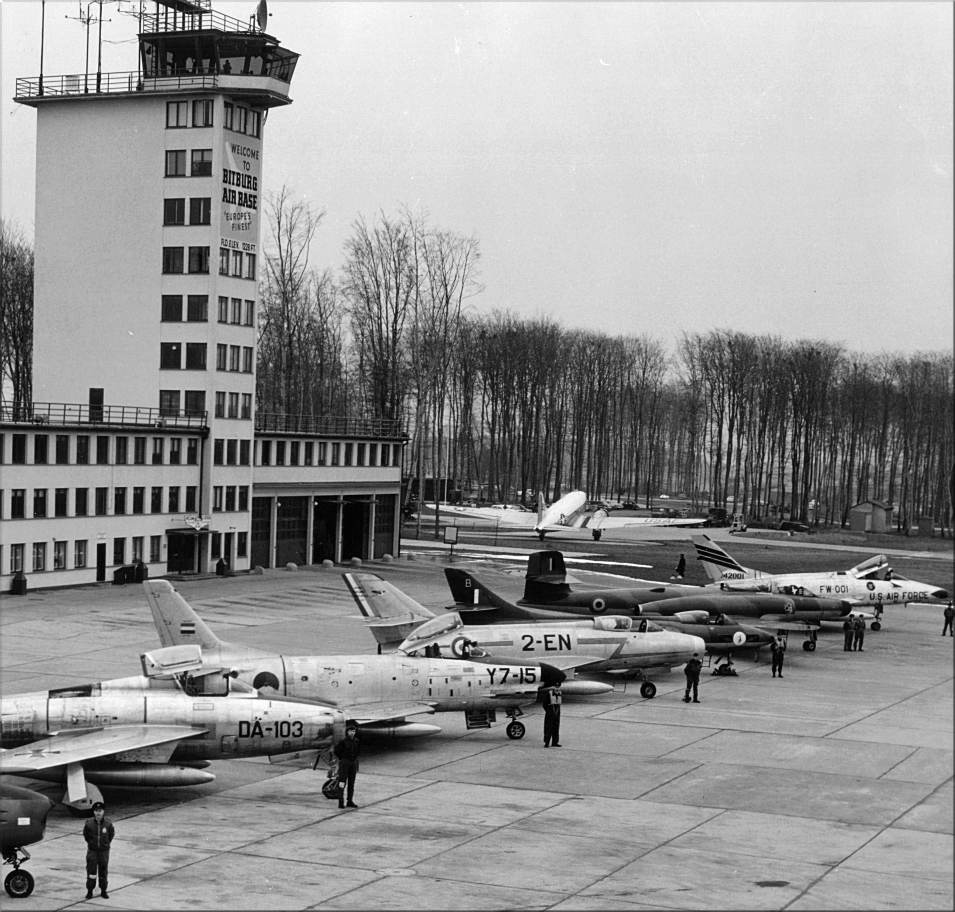
Somewhere over Cologne in West Germany, the two pilots now made a turn toward the east. This, unbeknownst to them, put them right on course to cross the border into East Germany, and onto Berlin, via some of the most heavily defended airspace anywhere in the world.
Around 3:00 PM local time, military radar picked up the two F-84Fs now near Warburg in West Germany and, soon after, air traffic controllers put out the call for NATO jets to scramble to meet the Luftwaffe aircraft, now clearly lost. It seems the pilots were unaware of the controllers’ concerns and were instead busy discussing the situation between themselves. “Where are we?” one reportedly asked. “Do you have the radio beacon?” Meanwhile, they continued on their eastward path.
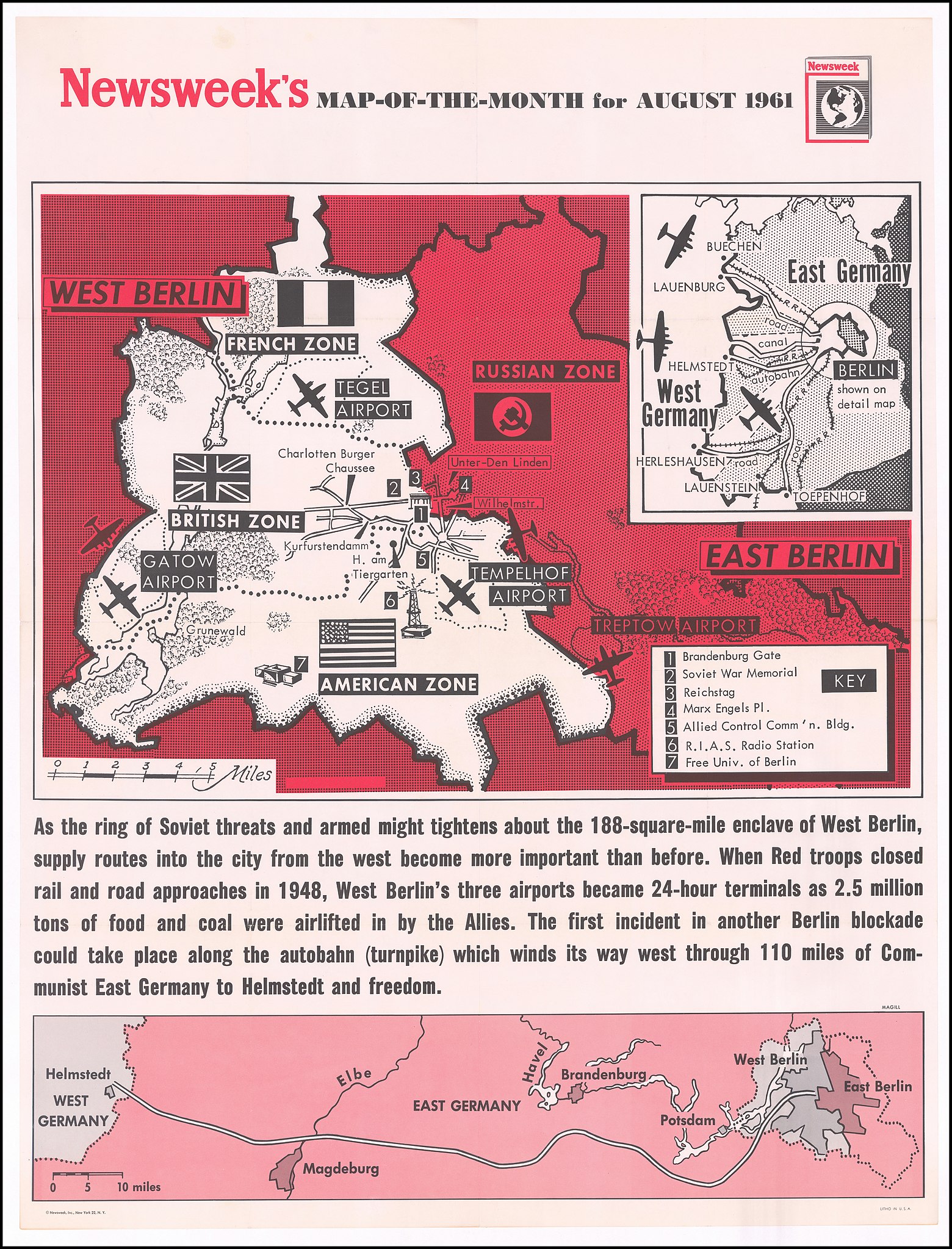
Before long, the two Thunderstreaks had penetrated the Iron Curtain and were over the East German city of Leipzig, when Pfefferkorn, the flight lead, switched to the emergency radio frequency and made a Mayday call.
However, the East Germans and their Soviet allies were already well aware of what had happened and had sent up interceptors to catch them soon after they penetrated communist airspace. Reportedly, no fewer than 42 fighter jets, consisting of various kinds of MiGs, had been scrambled from Soviet airbases in East Germany, but the F-84Fs were protected by a thick layer of clouds between 6,000 and 36,000 feet. Before the MiGs had a chance to catch the NATO jets, the intruders were over Berlin airspace, where the Four Powers (France, the Soviet Union, the United Kingdom, and the United States) exercised joint control of the airspace since the end of World War II.
President Kennedy’s address on the U.S. and NATO response to the Berlin Crisis in 1961:
While the American, British, and French allies all maintained airports in the enclave of West Berlin, these were off-limits to West German air traffic, military or otherwise, due to the Four Powers regulations governing the divided city. Not expecting West German combat jets to be over East German territory, the French air traffic controllers at Tegel Airport, in the French sector, assumed the Luftwaffe planes were lost civilian aircraft and suggested they land at Tempelhof, the U.S. airbase in Berlin.
At Tempelhof, it seems the controllers were too busy with a Pan Am DC-6 airliner that was arriving from Frankfurt, that they failed to notice the Luftwaffe jets. However, once the presence of the lost fliers became clear, the Tempelhof controllers instead requested the Thunderstreaks land at Tegel. While the two pilots considered turning around and flying back to the West, the Tempelhof controllers were aware MiGs were now in pursuit and called for the F-84Fs to drop down low over Berlin, aiming for Tegel.
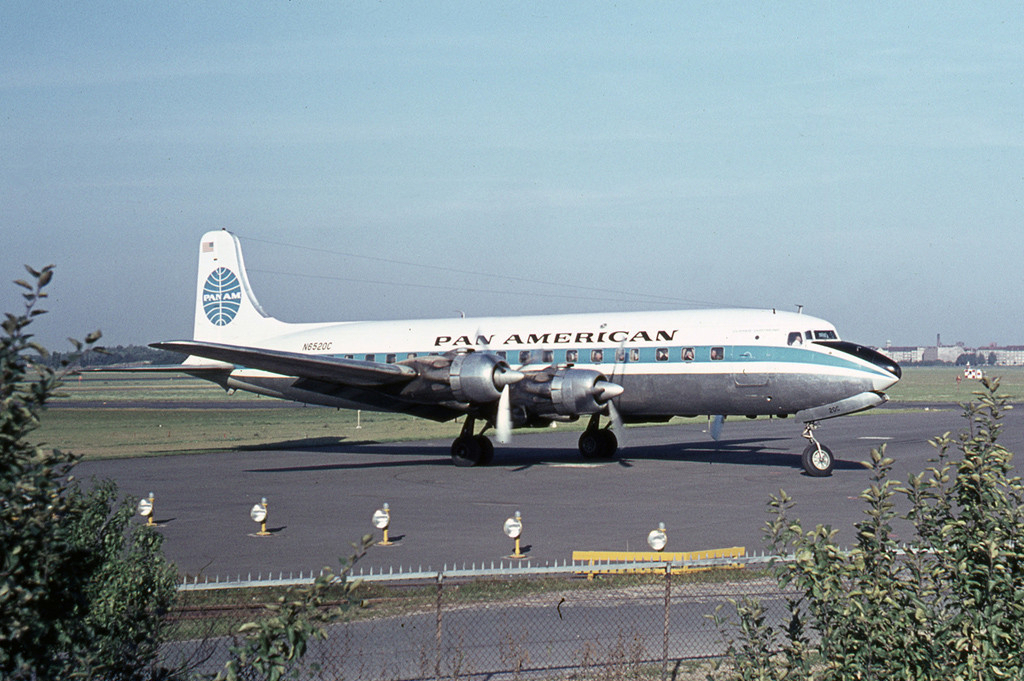
Not only did Tegel Airport have a much longer runway, but it was also less busy with other aircraft movements. Perhaps most importantly, it was further outside the city than the centrally located Tempelhof, making it less likely that the F-84Fs would be spotted. After all, as West German aircraft, they were prohibited from the airspace over Berlin.
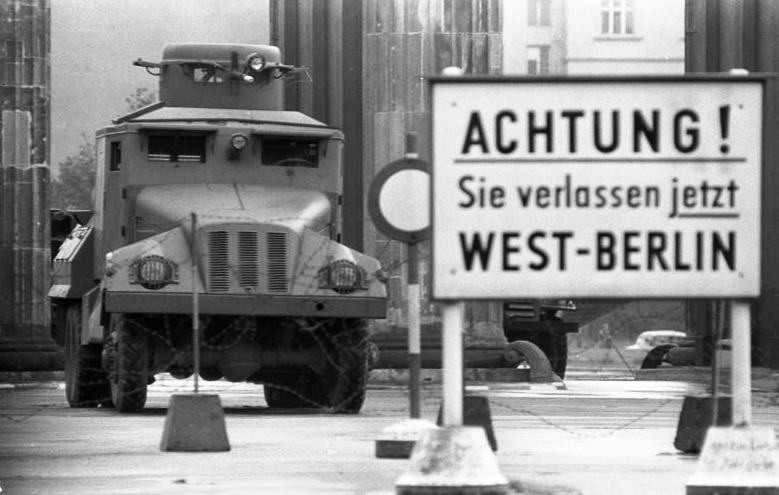
At 3:29 PM local time, the two Thunderstreaks touched down at Tegel in Berlin’s French sector. There then began a frantic effort to conceal the jets’ arrival, and they were quickly put in hangars. The French told the Soviet representative at the Allied air security center that the Tegel landing had been an emergency, the result of an unforeseen technical failure.
Pfefferkorn and Eberl were undoubtedly lucky to survive unscathed. The shooting down of NATO aircraft that strayed across borders into Warsaw Pact airspace was by no means unusual at this time. In 1964, a similar incident, in which a U.S. Air Force T-39 Sabreliner training jet flew into East German airspace, ended with the American jet being shot down by a MiG, and its three crew were killed. Two years later, a similar fate befell a U.S. Air Force RB-66 Destroyer reconnaissance jet, although its crew survived.
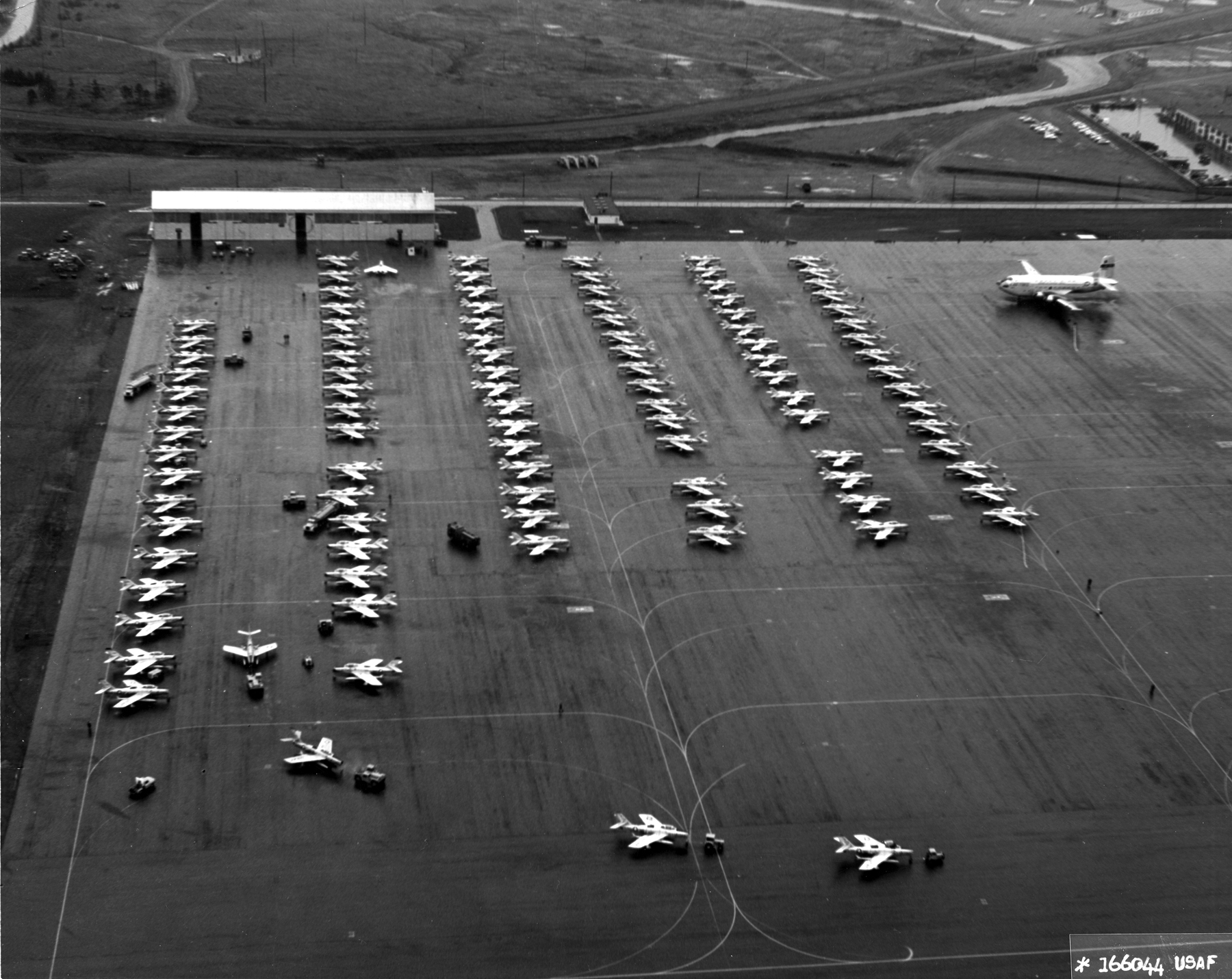
As it was, Pfefferkorn and Eberl, and their two jets, had escaped the attentions of the Warsaw Pact air defenses but had nonetheless created an international incident. The West German government in Bonn issued an apology, describing the incident as the result of “human and technical failure” and pointing to the failure of the compass system in both the jets.
The Soviets were still unhappy, making a formal protest against what they described as a “premeditated provocation” and threatening to shoot down NATO aircraft were it to happen again. This is a threat, as already noted, that they would follow through on.
As for the F-84Fs, it was decided to leave them where they were. After they had been cannibalized for their engines and, ironically, their navigation systems, the jets were unceremoniously buried south of the runway at Tegel.
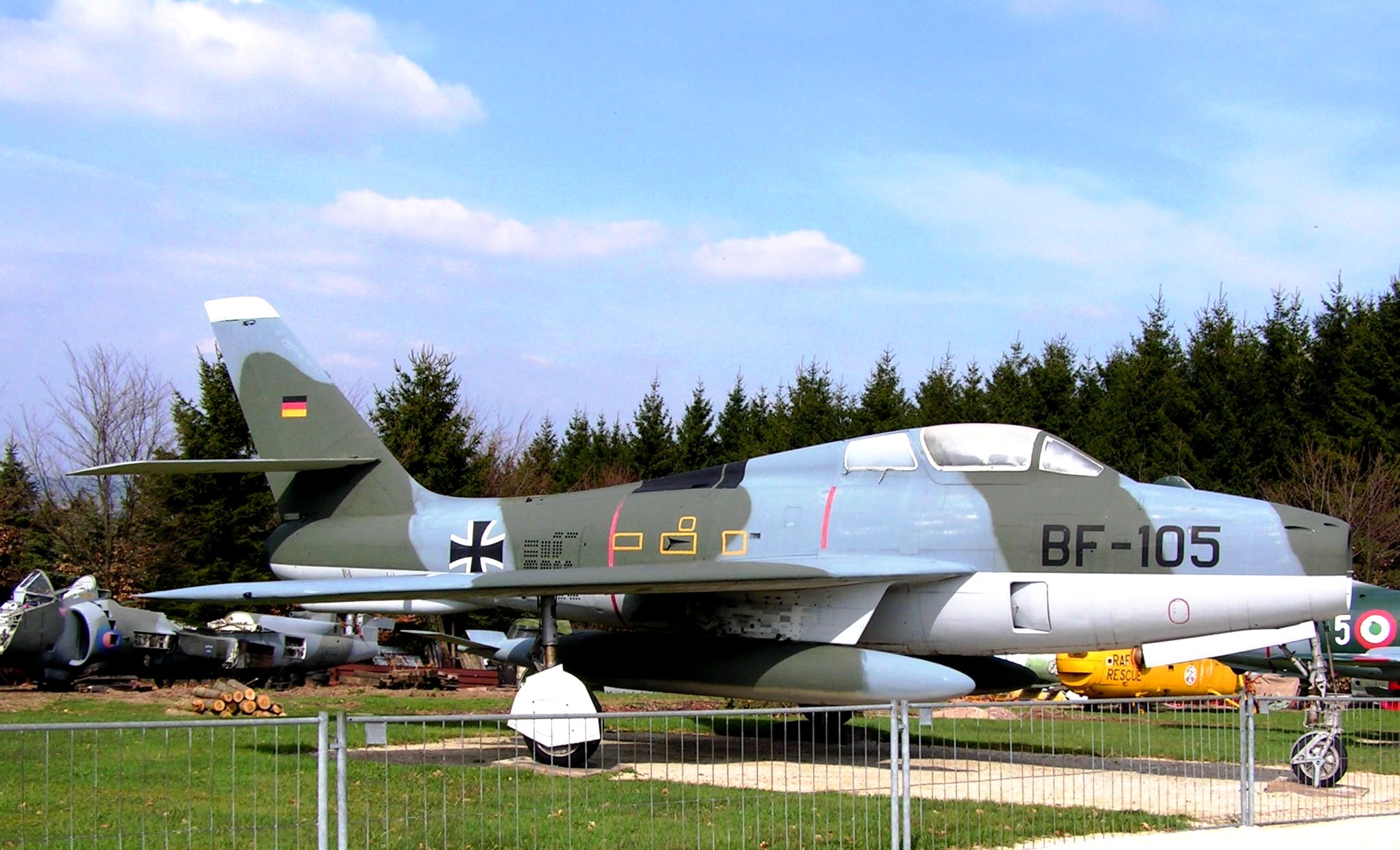
The pilots, both of whom had been arrested by the French authorities on account of their unplanned Berlin visit, only returned home after nearly five weeks. Their mistake was to prove costly to their careers: both were demoted to ground crew roles. The situation for their commanding officer, Oberstleutnant Siegfried Barth, who had flown for Nazi Germany during World War II, was, initially at least, even worse off. He was relieved of his duties until West German Minister of Defense Franz Josef Strauss relented due to legal pressure and reinstated him.
Not surprisingly, the implications of the incident caused concern in both East and West Germany. In the East, the fact that two NATO jets had flown as far as the capital without being stopped was alarming. For the West, there were questions at the highest levels as to how the F-84Fs had managed to penetrate so far into enemy airspace at a time of serious tensions, when it was known that it could have resulted in them being shot down or, worse still, convincing the East Germans and Soviets that they were under attack. As part of its response, the Luftwaffe declared that any subsequent such incursion of Warsaw Pact airspace would lead to the immediate dismissal of the responsible commander.
In a conflict that was punctuated by close calls, and in which the expanding nuclear arsenals on both sides meant that the threat of annihilation was very real, the incident of September 14, 1961, is a reminder of just how high the stakes were.
Contact the author: thomas@thedrive.com
